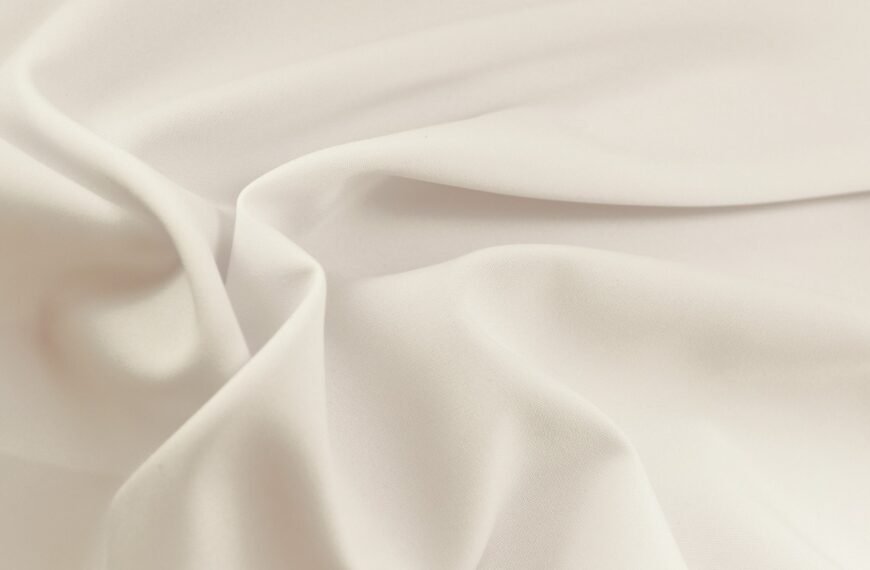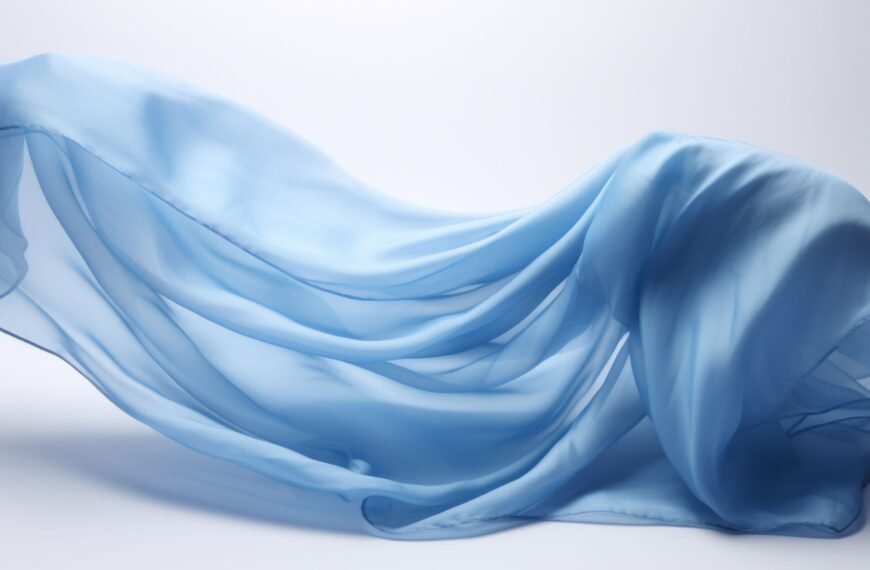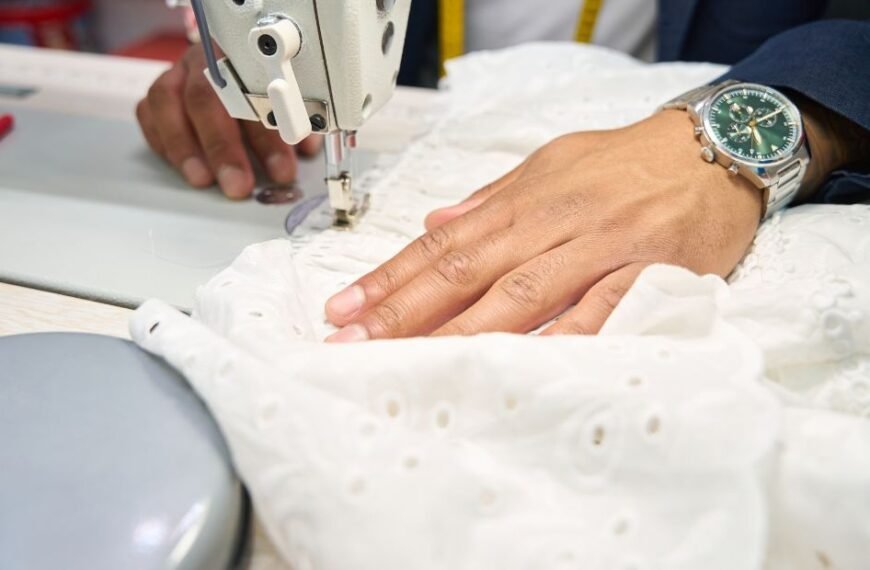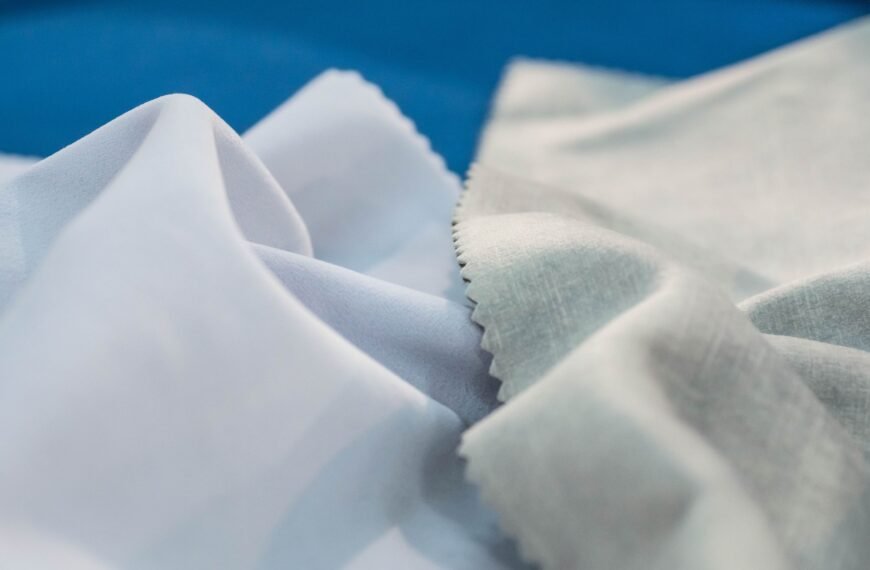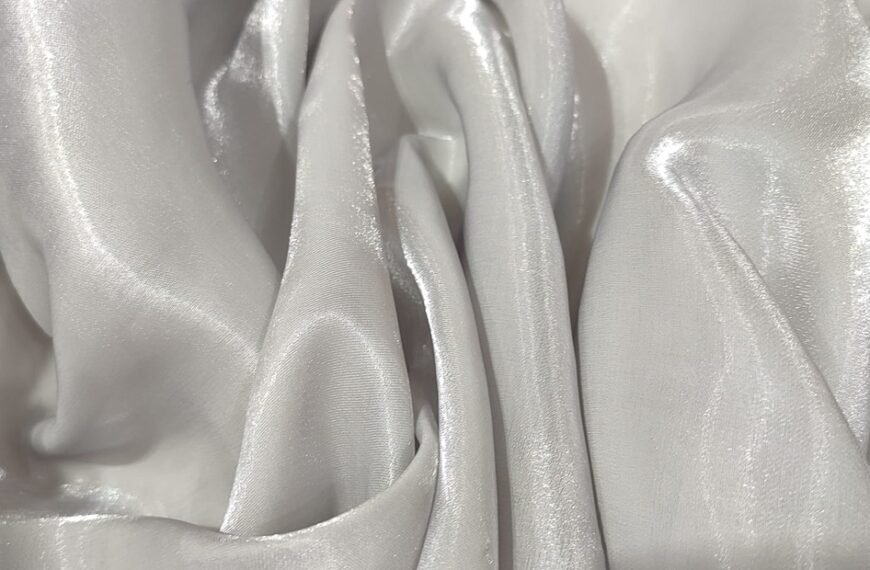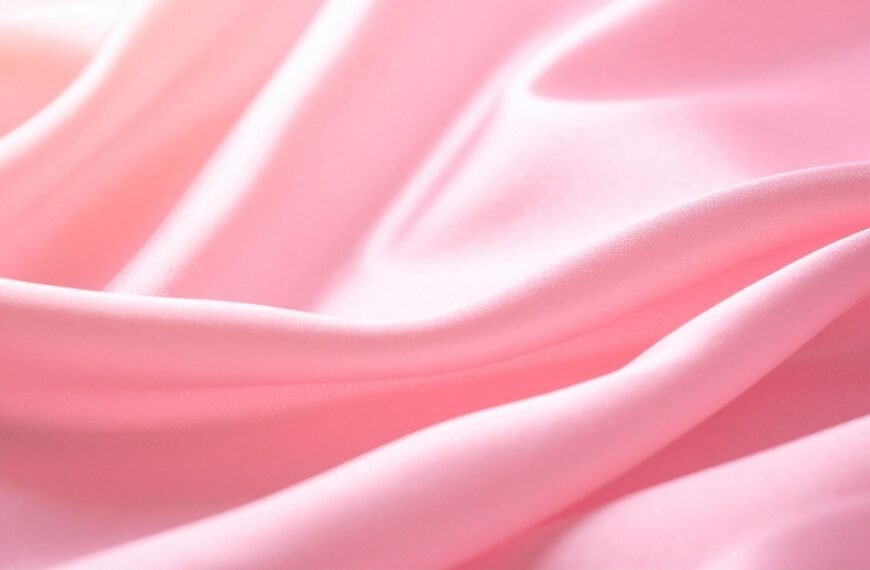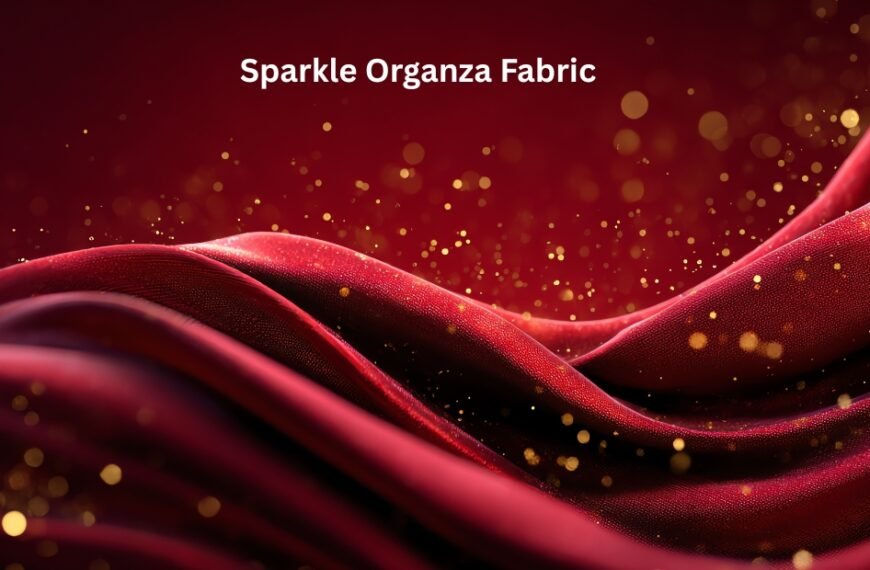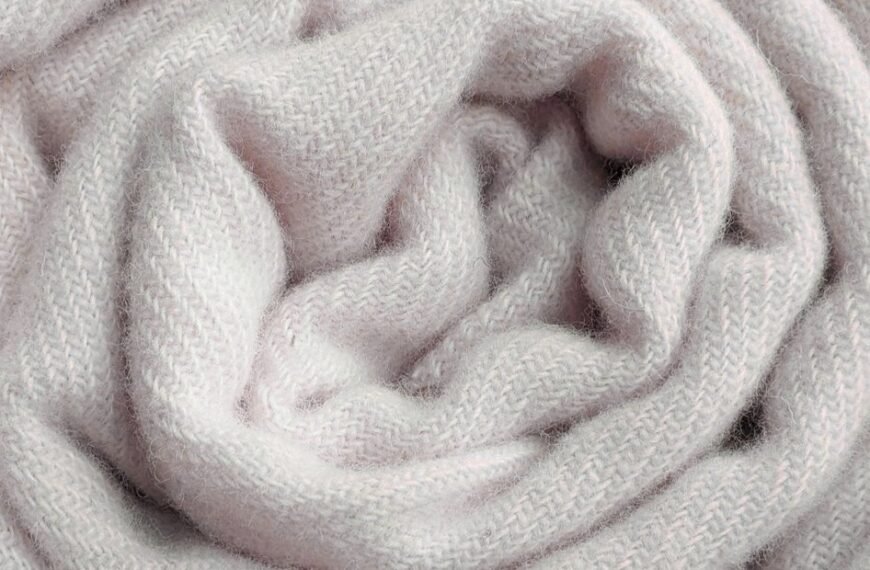Introduction-
One of the questions that many buyers frequently raise is: is rayon stretchy or stiff. This is a simple question that is important since rayon is ubiquitous. You will see it in dresses, skirts, blouses, shirts, bedding and even upholstery.
Rayon is popular with shoppers due to its breathable quality and the feeling of silk. However when one compares rayon with cotton, polyester and spandex, then confusion will occur. There are those who wonder whether it is stretched out and others think it is stiff. Knowledge of the stretchability of rayon will enable you to make the right selection of your style in terms of fabric used.
Now we shall enter the depth of the reality of rayon behavior and blends as well as caring.
What is Rayon?
Definition: Semi-Synthetic Fiber from Plant Cellulose
Viscose (commonly referred to as rayon) is a semi-artificial fiber based on cellulose found in plants (e.g. wood pulp). It is created by the chemical process using natural materials, hence it is not plastic, but neither is it completely natural. The molecular cellulose structure of rayon is the same as that of cotton and silk. Its multifunctional chemistry allows manufacturers to make rayon appear to be different types of natural products (silk, wool, cotton) but remain light and smooth.
Properties: Soft, Breathable, Silky
The rayon fibers are soft, smooth and breathable. So say, rayon tends to feel quite soft against the skin and it is more like silk or finer cotton. It takes up moisture easily, and hence garments remain cool during hot seasons (rayon is also best used in humid climates). Rayon is also very nice to wear around curves (it is in flowing folds). It is somewhat silky or lustrous. To the point, rayon is light and easy to wear on a daily basis, with no disadvantages of silk and cotton.
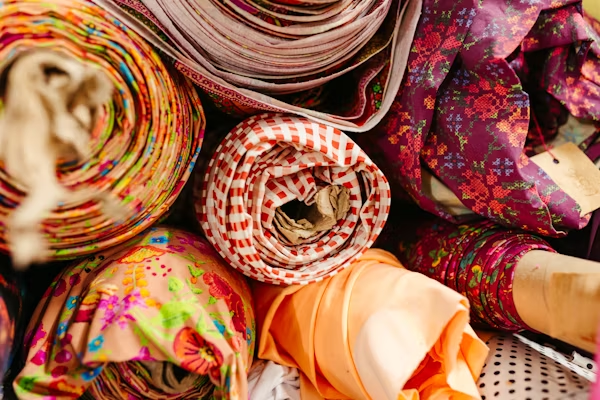
Different Types: Viscose, Modal, Lyocell
Rayon has a number of types. The most popular form is viscose rayon. A garment labeled 100 percent rayon will most likely refer to viscose. Rayon also has modal and Lyocell. modal (of beech-tree) is worked to be stronger and less hard; it may stretch nearly 8 per cent of its length. Lyocell (so called Tencel brand name) employs another closed-loop solvent process. Lyocell is quite robust when in wet condition and it is relatively environmentally friendly. Overall, modal and lyocell are shinier and slightly more elastic than standard viscose (stretches up to 5 percent), but they are in fact rayon.
Is Rayon Stretchy?
100% rayon lacks considerable natural stretch. As a matter of fact, the natural stretch of 100% rayon is very low. Rayon drapes, alone, hang gently rather than snapping. It implies that pure rayon clothing tends to hang loose, or wrinkly instead of fitting or stretching. When you stretch a rayon shirt it will not stretch but will wrinkle or will even shrink a little. That is, pure rayon is in effect not elastic. It is soft and flowing, yet is not going to stretch out when stressed. The answer to this is therefore: No, pure rayon is not stretchy.
When Does Rayon Become Stretchy?
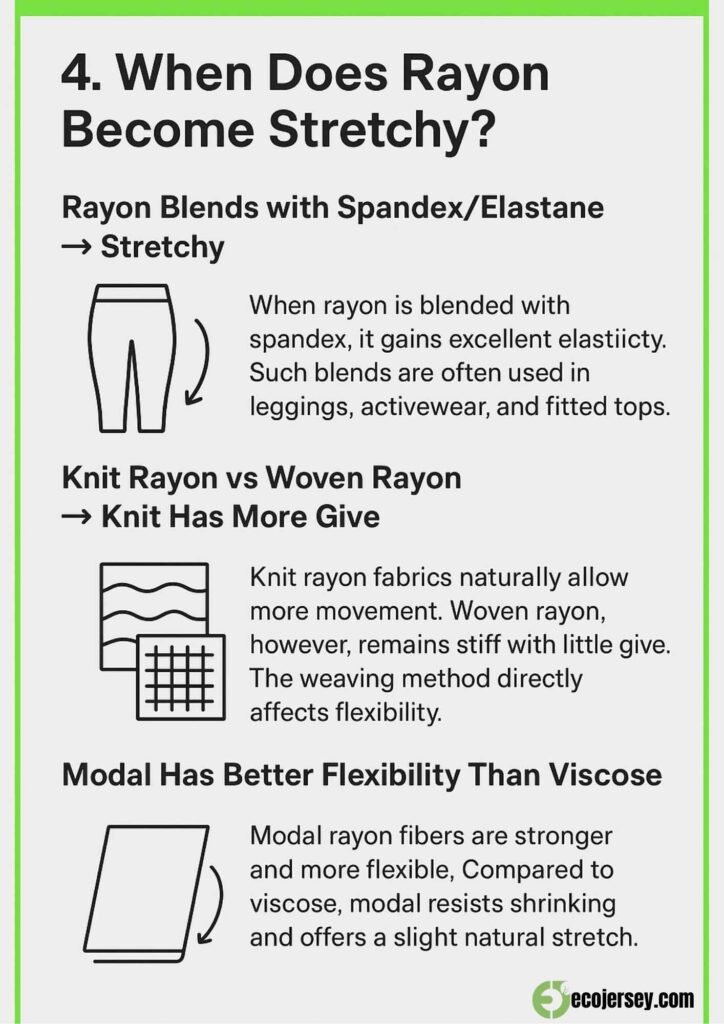
Rayon + Spandex/Elastane Blends
Spandex (elastane) can be added to make rayon stretchy. Spandex is the skimpy fabric of leggings and swimming suits. Sparing a few percent of spandex in a rayon blend renders the fabric elastic. As an example, a 95% rayon/5% spandex jersey will stretch very much. Practically, the knits made of rayon-spandex can be easily stretched to conform to your body. That is why a lot of fitted tops and activewear garments have rayon-spandex mixes: rayon helps the garment to stay soft and drapey and the spandex provides the stretch.
Knit vs. Woven Rayon
The construction is also an issue. Knit rayon (as jersey knits) is stretchable and woven rayon (as twill or poplin) has no stretch. Through an example of rayon jersey knit, this type of fabric can easily be stretched 25-30 percent on each side. On the other hand a rayon fabric that is tightly woven does not stretch much at all. Simply said, knitted rayon is stretchy, and woven rayon is rigid.
Modal vs. Viscose
Modal rayon is slightly more flexible than usual viscose. Modal rayon is capable of stretching to approximately 8 percent as compared to 5 percent of viscose. In this way, modal dresses and underwear will be a little more stretchy and strong. Yet, both of them are not as elastic as spandex-made fabrics. However, when it comes to drape and comfort, there is a notable difference with modal with more bounce than regular rayon.
How Rayon Behaves Compared to Other Fabrics
| Fabric | Stretchiness | Drape/Feel | Durability |
|---|---|---|---|
| Rayon | Low (≈5–7%); more with spandex blends | Excellent drape; silky, soft feel | Moderate (weaker when wet) |
| Cotton | Low (≈3–5% in woven cotton) | Good; natural matte look | High (stays stable wet/dry) |
| Polyester | Moderate (plus high when blended) | Less drape; firmer hand | Very high (strong, durable) |
| Spandex | Extremely high (400–500%) | Not used alone for garments | High (recovers shape well) |
Rayon vs Cotton: Comfort and Stretchiness.
Cotton is a moderate fabric that is capable of stretching slightly when worn. Rayon is more absorbent but it is not elastic. Cotton will be more sturdy, rayon less sturdy and smoother, and silk smoother.
Rayon vs Polyester: Elasticity and Strength.
Polyester is firm and does not lose the shape. Rayon on the other hand has the ability to slump or contract. Polyester has a low level of elasticity and rayon has to be mixed to provide stretch.
Rayon vs Spandex: The Reasons Blends Are Worn.
The spandex is very stretchy. The rayon is mixed with spandex to provide stretch, comfort and durability. With this blend, fabrics that are perfect in active wear and fitted apparel are produced.
Does Rayon Stretch Over Time?
Shape Loss When Wet
Rayon is very susceptible to moisture. The fibers of rayon loosen when wet and may distort. Water destroys the hydrogen bond on the rayon, which causes weakening of the fiber. Consequently, wet rayon will readily stretch out of shape, hang or even tear, when stressed. Designers observe that rayon is more flexible and stretchy when wet hence you should handle wet rayon carefully.
Permanent Stretch vs. Shrink
Rayon can also change shape, over a period of time. Rayon does not bounce back as well as cotton. It is stated that rayon is not very elastic in nature and the sensitivity to moisture may make it lose the shape. Over time rayon can either shrink or stretch out. Therefore, a rayon shirt can unintentionally slack or stretch at the elbows after each use or misuse. When a rayon product is stretched or pulled many times (e.g. by hanging it on a narrow hanger), it may permanently become larger. On the other hand, it can curve back strangely, when not dried flat.
Risk of Shrinking Instead
Actually, the issue of shrinking is greater than that of stretching. Rayon fibers will relax in water and tend to shrink when washed in the wrong way. Our sources say that rayon may shrink by approximately 10 percent when wet or laundered. A rayon cloth can become shorter in length, and thinner in width, unless the mill has pre-shrunk it. This implies that instead of being able to be long-term stretched, rayon clothing tends to be smaller when washed in warm water or dried in heat. Always think that rayon should be treated gently in order to maintain its original size.
Pros & Cons of Rayon’s Stretchability
- Gorgeous Draping: Rayon is effortlessly flowing and fits the body shapes to make graceful shapes (dresses, skirts, blouses look loose). Its minor stretch makes clothes slide over the body.
- Silky Softness: Rayon is soft and smooth, the so-called artificial silk. The material is light in weight and breathable (good warm weather). These properties give rayon extremely comfortable properties, though it may not be stretchy.
- Light Comfort: Rayon has an airy structure that is cool. It is lightweight, but opaque fabric, and light to the touch. It is a good wicker and you are cool.
- Low Elasticity: Rayon has practically no natural stretch. A rayon garment with a woven fabric will not stretch back to its original shape once pulled and therefore can stretch out of shape as it ages or it can stretch at the seams. Fitted clothes have this disadvantage of lacking bounciness.
- Wrinkle and Sag Risk: Rayon wrinkles easy. In contrast to polyester, rayon requires ironing and can be creased. When mishandled (this is particularly true when wet) it may end up loose and lose its shape. Rayon fibers are able to contract or expand instead of restoring to their size.
- Sensitivity to Care: Rayons are sensitive to care in order to preserve shape. They do not stand heat or coarse washing. Rayon garments will either shrink or loosen unless you pay strict attention to instructions on caring unless mixed or treated.
Best Uses of Rayon Fabrics (Stretch & Non-Stretch)
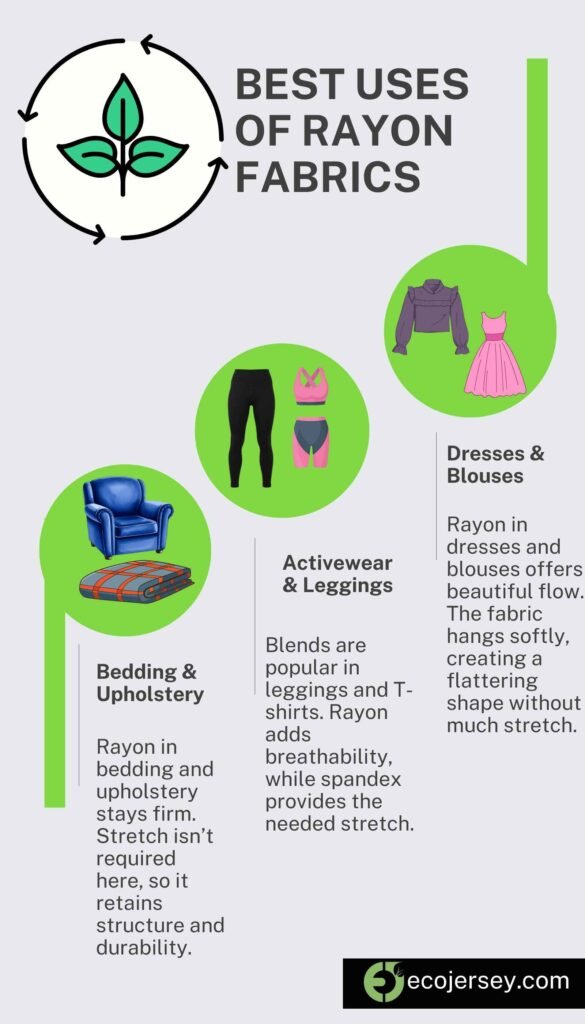
Dresses & Blouses (Draping)
Flowing rayon garments are magnificent. Designers appreciate draping because rayon flows beautifully. Rayon’s silky drape and soft hand are perfect for garments that don’t need stretching. Consider, for example, summertime dresses. The dresses float around the body and the fabric helps keep the heat away. In these styles, rayon is appreciated for pliability and for look.
Activewear, Leggings & T-Shirts (Rayon+Spandex)
Casual fitted styles are made with rayon, usually blended with other materials. A common example would be jersey knit fabric that is 95% rayon and 5% spandex. Descriptions of this fabric state that “it is lightweight with 4-way stretch – perfect for dresses, loungewear, and activewear”. Rayon-spandex blends are used to create leggings, T-shirts, and other activewear. The spandex enables the fabric to stretch, and rayon offers softness, which is important in activewear. These styles are designed to stretch and recover, thanks to the combination of spandex and rayon.
Bedding & Upholstery (Usually Non-Stretch)
Fabrics containing rayon can be used for home textiles, although in these cases stretch is usually unwelcome. For bedding and drapery, rayon’s softness and moisture-wicking properties are prioritized over elasticity. For example, rayon Lyocell (Tencel) is highly regarded for sheets as it feels cool and smooth. Rayon can be incorporated into upholstery fabrics, and it can also be used for curtain softening sheen. In these cases, rayon is more often used in woven form and combined with cotton or polyester. The fabrics formed are relatively stable and stretch very little. These cases leverage my texture and breathability while avoiding great use of stretch.
How to Care for Rayon to Maintain Shape
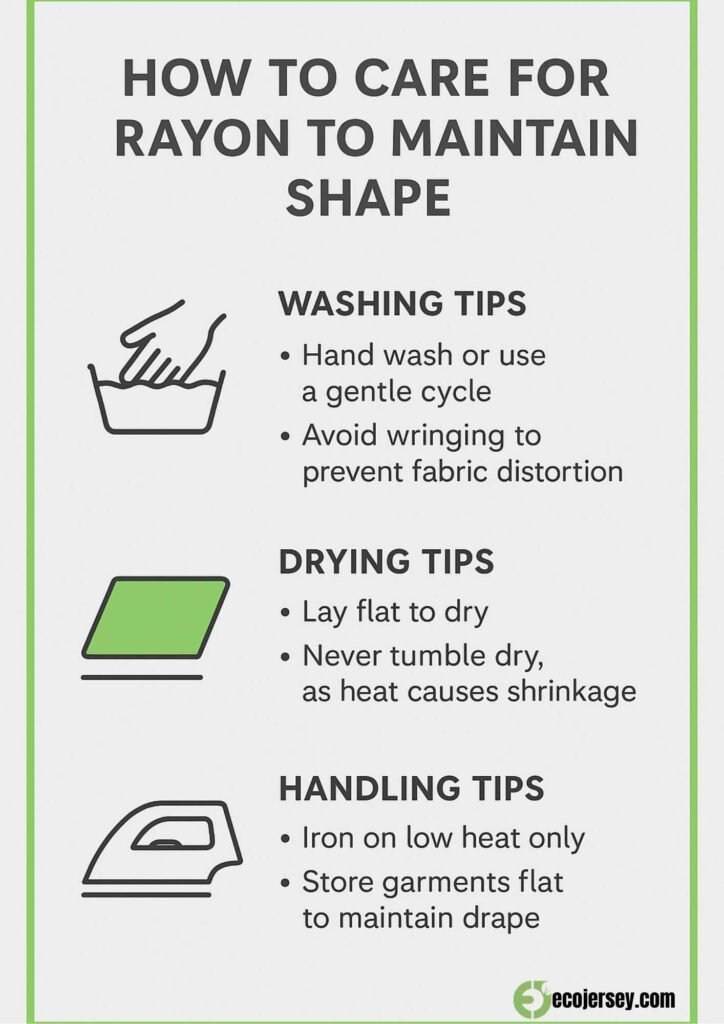
- Gentle Cycle or Hand Wash: Wash rayon in cold water on delicate cycles. Machine washing should be kept to a minimum and use a laundry bag when machine washing.
- Avoid Wringing or Twisting: Do not force water out of rayon by wringing. It will distort the fiber. Instead, press out water or roll the garment in a towel.
- Lay Flat to Dry: Always reshape rayon items and dry them flat on a clean towel. Do not hang heavy rayon knits; they can stretch under their own weight. Never tumble-dry rayon (heat damages it).
- Iron Carefully: If needed, iron rayon on low heat while it is slightly damp, or use a pressing cloth to protect the fabric.
- Store Properly: Fold or hang rayon clothes on padded hangers to avoid shoulder bumps. Keep them in a cool, dry place to avoid moisture which will weaken the fibers over time.
Conclusion-
Does rayon have some stretch? Well, not really since rayon on its own does not stretch and is not elastic like some other fabrics. It does, however, drape.
When blended with spandex or knitted into other fabrics, rayon stretches. Modal rayon also gives some more stretch. When purchasing, decide if you need stretch or drape. Pure rayon is what you need for flowy dresses. For rotary-spandex blend is best for leggings or fitted tops.
Rayon is also beautiful for its versatility and silky softness. Choose carefully and you can have style and comfort at the same time.
Read More>> About what is rayon fabric?
FAQs
Does rayon stretch when wet?
It’s true that rayon fibers become softer when wet. In fact, the more a rayon fiber absorbs moisture, the more pliable and “stretchy” the fiber will become. You should be careful not to put a damp rayon garment under heavy pulling or hanging because it will stretch a lot when wet.
Does rayon stretch after washing?
If rayon is washed and air-dried hanging, it will stretch and may be permanently altered, sometimes by as much as 15%. However, during gentle washing and drying, most rayon will return almost to the original shape. Once the rayon is dried flat, most of it will return to its original shape.
Is rayon more stretchy than cotton?
Stretchy substantially more than tightly woven cotton. “Rayon is slightly stretchier than 100% cotton, especially when knitted” added a source. In the more loose or knitted weaves, rayon can droop and stretch more than pure cotton. However, in most cases, both fibers will stretch only a little. Compared to rayon, cotton will more likely snap back while rayon will lose its shape.
Do rayon-spandex blends shrink?
Rayon with spandex is usually more stable, but rayon can still shrink if not handled carefully. Fabrics keep their shape because of spandex blends, but high heat and agitation can still shrink blends. To reduce shrinkage, wash rayon-spandex in cold, gentle cycles, and air-dry. Don’t use high heat; the rayon fiber will contract more.
Is modal rayon stretchy?
Modal is one of the stretchier rayons. It typically stretches about 8% of its length, which is more than standard viscose. Modal fabrics feel silky and resilient, so they have moderate stretch and recovery. While not as elastic as spandex, modal garments will give you a comfortable, flexible fit.


